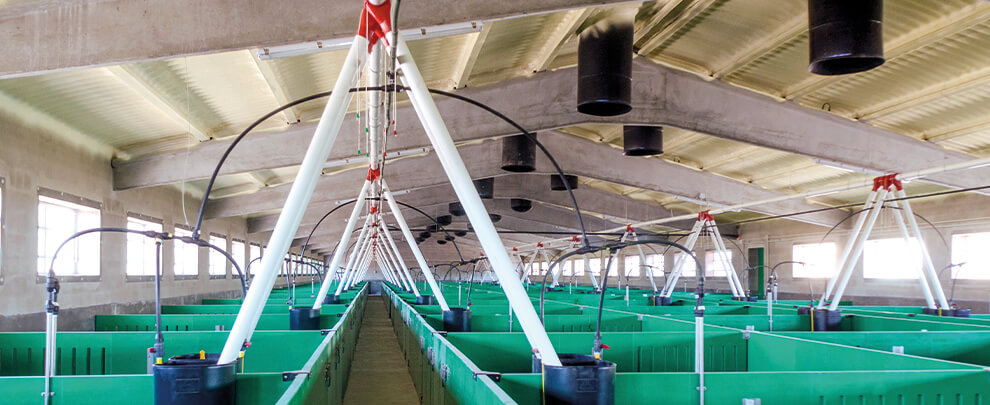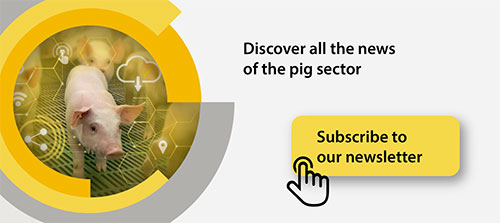Blog
Blog

Downpipes for feed distribution systems
18th September 2024 - News
In previous articles, we have discussed the specificities of feed transport systems (with chain or with flexible spiral); in this one, we will discuss the downpipes where the feed falls to fill the feeders.
Drop outlets
Drop oulets can be single (coming out of one line) or double (coming out of two lines) and are available for different distribution line diameters (55, 60, 75, and 90 mm) and outlet pipe diameters (63, 70, and 75 mm).
Double drop outlets are recommended when animals are fed simultaneously in the same section with two different types of feed depending on their gender or size. With this type of nozzle, it is possible to select from which of the two feed lines the feed that falls through the outlet tube is dispensed according to the open or closed tab.
All models are quick to install and operate via ropes without reaching the feed tube by hand. They also have a top cover to prevent water from entering the pipe if the house is washed with tubes full of feed.
The nozzles are fixed with flanges. However, the design of Rotecna's nozzles allows them to be attached to the line tube so that the installer has both hands free to place the flanges more easily during assembly.
Outlet Tubes
The outlet pipe can be installed at different inclinations in simple models, as the nozzles can rotate on the line tube. It is not recommended to exceed 30º of slope, but you can reach up to 45º with a feed that does not have flow problems since the mouths have a unique design on one of the sides to help the feed flow through it in these extreme cases. In addition, in cases where the outlet tubes have much inclination, they must be more prominent in diameter, especially if you are using a feed that does not flow easily.
In double openings, the outlet pipes come out perpendicular but can be oriented by installing flexible pipe sections as a mobile joint.
In the outlet tubes, Rotecna recommends the installation of extendable telescopic tubes in the feeders to easily control the total or partial filling of the hoppers by raising or lowering the tube since it is not recommended to fill the feeder with more feed than the animals are going to consume in a day. The reasons are, on the one hand, so that the feed does not lose organoleptic properties and, on the other hand, in systems where animals are given more than one type of feed so that more feed of one kind is not put into the feeder than the animals should consume. This is especially important in feeders for animals from 5 to 30 kg, as the ratio between hopper volume and daily consumption of the animals is usually substantial. This solution should also be considered in feeders, especially when the animals are in their early stages and still have limited consumption.
The outlet tube must not leave the feeder hopper to avoid feed loss accidents outside the feeders. Therefore, it is recommended that the fixed tube remain inside the hopper and not be removed without disassembling it before the mouth of the line tube. The telescopic tube should run over it, extending it into the hopper of the trough.
In the case of telescopic tubes, it is crucial that they can be lowered through the hopper to the minimum level desired by the centre of the feeder to ensure that the feed reaches all maws, even when the animals have consumed part of the feed. This should be considered if the outlet tubes are lowered at an incline through the feeder hopper and if the feeders have multiple maws or are double, as the ratio between the hopper capacity and the daily consumption of the animals is higher. It may be necessary to install more than one outlet pipe per feeder.
Feeding systems must be designed and sized according to each facility's needs. Rotecna analyses each case and offers the best solution for optimal feed distribution inside the farms, offering reliable, efficient, and safe systems.








